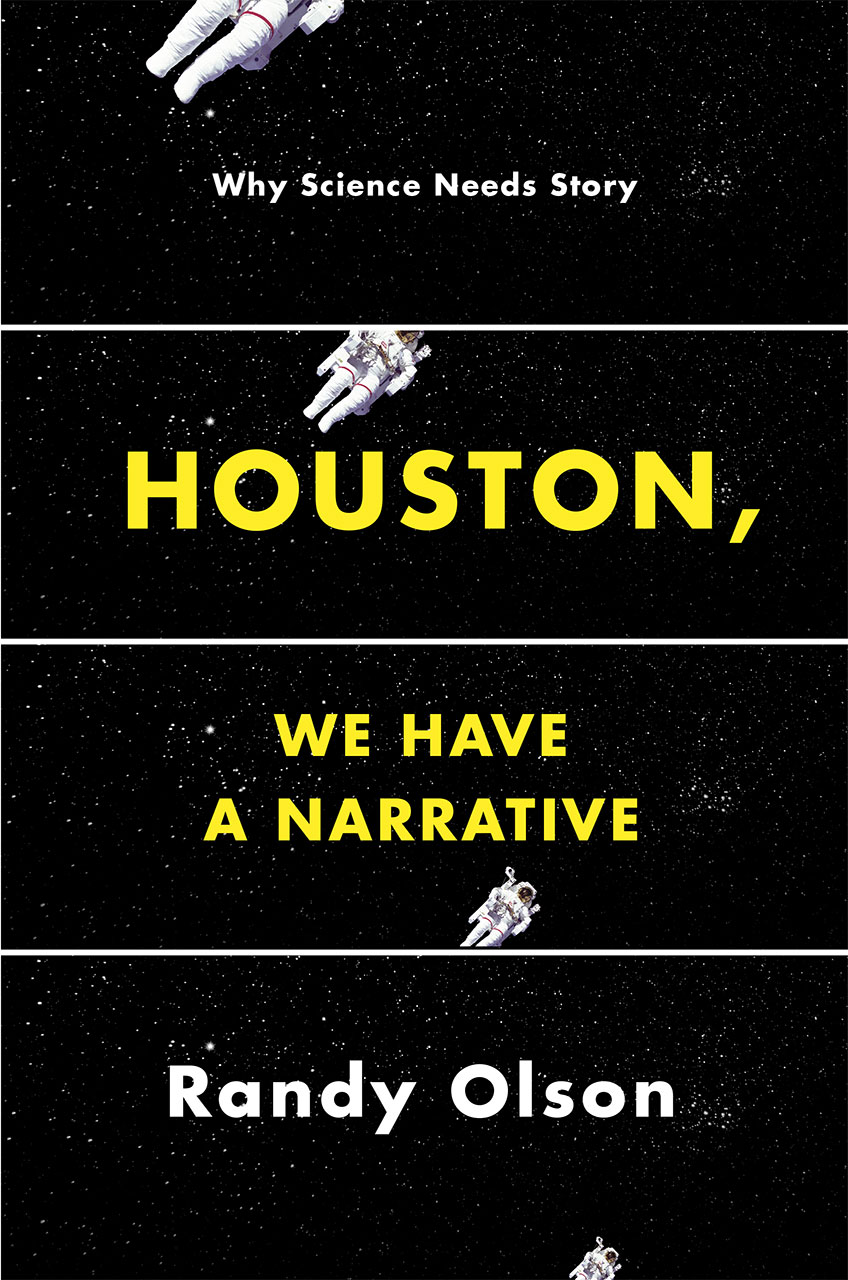
For the next few weeks, we turn back to Randy Olson. After reading his 2009 work Don't be Such a Scientist, I wanted to read more from Olson. In Houston, We Have a Narrative: Why Science Needs Story, he continues the project he began in Don't be Such a Scientist; again, he wants scientists to learn from Hollywood and mass marketing about how to get their messages across. Here, however, the focus is on storytelling. He wants scientists to become storytellers, and this book explains how.
The first chapter explain why scientists need to become storytellers.
Olson begins by saying that science is inundated with story. IMRaD, the structure of scientific papers, is itself a narrative structure: introduction (why), methodology (how), results (what), and discussion (so what?). Scientists know that structure, but they refuse to think of it as narrative.
And that refusal to tell stories causes problems.
Problems from not using narrative in science
First, the refusal to craft stories leads to exaggerated claims. Scientists can't get published if their results do not amount to something new and positive. Null results, ones where there is no pattern, can't get published.Because scientists refuse to use the narrative structure to make even null ideas exciting, they instead exaggerate their claims to make the results themselves exciting. If they would tell a good story, even the null results would be seen as important (which they are. All scientists know that proving something is not true is just as important as proving something is true.).
Second, the lack of storytelling or narrative leads to a public that doesn't buy many of the claims of science. Story makes people listen, and on many issues the general public isn't willing to listen to scientists because they don't use narrative. Narrative makes the public care.
The And, But, Therefore (ABT) method
Olson advocates the and, but, therefore (ABT) method for communicating science:"In my laboratory, we study physiology AND biochemistry, BUT in recent years we've realized the important questions are at the molecular level, THEREFORE we are now investigating the following molecular questions..."He calls it the "DNA of story," as well as the DNA of argument, and they're both based on the Hegelian dialectic, which is, not coincidentally, the DNA of the scientific method.
Therefore, Olson sets up his own book in a similar manner. He begins with a section called "Thesis," then moves into "Antithesis," and concludes with "Synthesis."
What he wants is to create a narrative intuition and a narrative culture, where scientists think in terms of story and can evaluate the stories of others.
Let's continue and see exactly what he means here.
No comments:
Post a Comment